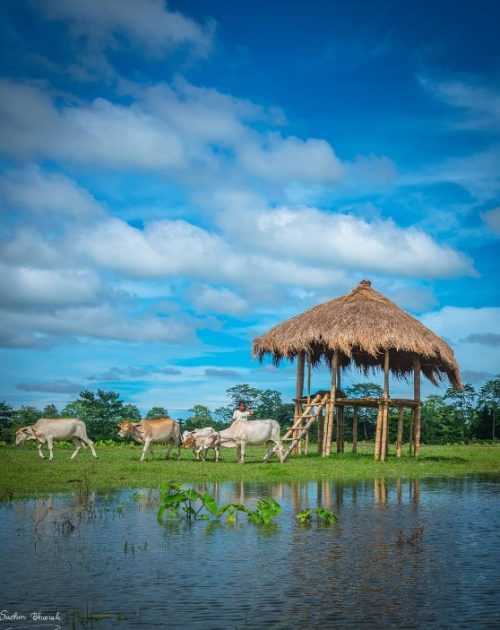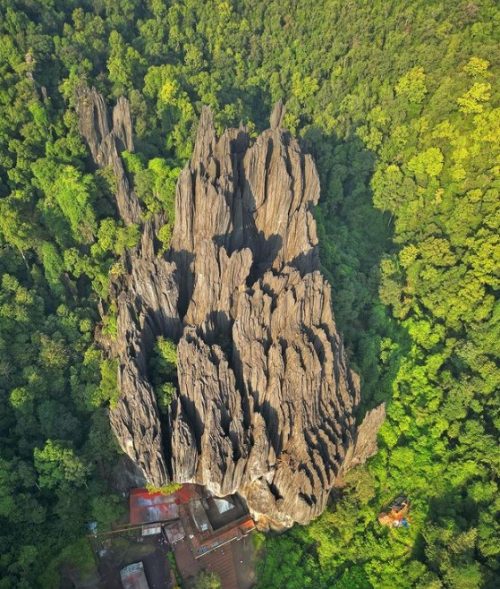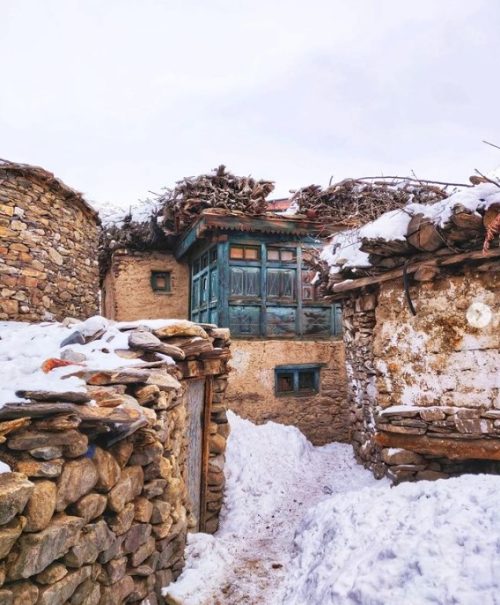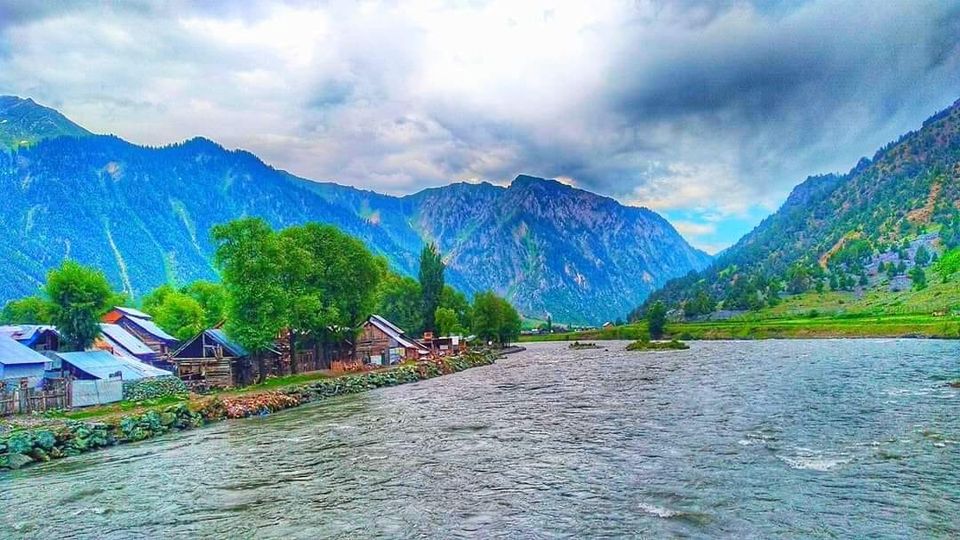Imagine this: You’re up at the break of dawn. Cramming in a run before the day begins seems like a good idea. You take to the streets of your neighbourhood, greeted by a gust of crisp air, the trees lining the path forming a corridor of green. They seem to cheer you on.
In a while, the city will begin to rise. But when it does, the only sounds that make it to your ears are those of fellow joggers trying to catch their breath, laughter in the distance, a bicycle bell, and the occasional music streaming out of a radio.
This isn’t a scene out of an alternate universe. For many of India’s villages, it is a reality. Even as their residents plough through their lives, sustainability and cleanliness are not put on the back burner. And their initiatives are setting an example for India to follow.
1. ‘Curtail plastic’ — Majuli, Assam

As tourists cruise through the Brahmaputra river, they cannot help but admire the majestic water body and its surrounding islands. A must-visit spot here is Majuli in Assam’s Jorhat. Along with making headlines for being the first island in India to be given a district status, the cleanliness model of Majuli has caught attention. Their bamboo homes ensure a low carbon footprint, while the residents can often be seen with brooms in hand, attempting to clean their beloved island.
But, these lessons in cleanliness aren’t the only takeaways. During your visit, you will encounter the Mishing tribe. They are firm believers in ‘Donyi Polo’, a religious system founded on the principle that everything in the universe is interconnected.
2. ‘Organise clean up drives’ — Yana, Karnataka

Touted as one of the wettest villages in the world, Yana in Karnataka draws tourists with its rock outcrops formed from solid, black, crystalline karst limestone. A 0.5 km trek from the Kumta-Sirsi Highway, these rock outcrops have become a religious pilgrim point. Devotees flock to pay their respects to the swayambhu linga (self-originated idol) in the caves formed by the outcrops. As the name suggests, the idol is a result of geological processes and has formed naturally.
What is remarkable is that despite heavy tourist inflow, Yana has maintained its status as the cleanest village in the state. And this owes to the regular cleanup drives conducted by the forest department. In some areas of the cave, wearing footwear is discouraged, also adding to the hygiene quotient.
3. ‘Sweep the area clean’ — Khonoma, Nagaland
Birds whisper into the ears of every person walking down the roads of Khonoma village in Nagaland. Take time to listen. To anyone who looks up to Asia’s first green village for a solution to sustainability, it will tell you ‘just plant more trees’; a green cover can outweigh everything else.
Khonoma wasn’t always on this path. You’d be surprised to know that the village was battling deforestation in the late 1990s. The residents took it upon themselves to ban the cutting down of trees.
Today, the land is pristine as paddy and forests dot the landscape. The people of Khonoma have displayed resilience in protecting the endangered bird ‘Blyth’s Tragopan’, which tourists now flock to see. They have also undertaken other green measures.
As an article in Morung Express notes, every Saturday morning, schoolchildren across the village get to work, emptying out the dustbins along the paths. The activity has taken place twice a month since 2005 when Khonoma was declared a ‘green village’, and the children seem only too happy to lend a hand.
4. ‘Use local building material’ — Nako, Himachal Pradesh

Nothing beats the view you get of the Himalayas from this village nestled on the Indo-Tibetan border in the Kinnaur district of Himachal Pradesh. But the glorious scenery and waterfalls —- that legend says are the homes of fairies here — aren’t the only fantasy elements.
The village air is said to be so crisp that it hurts to breathe it in! One could credit the Lipa Asrang sanctuary with its host of conifers and alpine scrubs for the pure air. But the villagers too deserve a mention. Here, cleanliness is not an advice, it is an obligation. Roadside garbage bins dot the streets and signs of ‘Keep Nako Clean and Green’ are frequent sights.
Additionally, buildings made out of rammed earth, stone and other local materials ensure that construction activities do not involve materials being transported over long distances, thus going a long way in curbing pollution on the road.
5. ‘Build toilets’ — Mawlynnong, Meghalaya
Literacy is an integral factor in contributing to a clean country. Proof of this lies in the Khasi village Mawlynnong near the Meghalaya-Bangladesh border, which boasts of two things — being Asia’s cleanest village and having a 93.71 percent literacy rate according to the 2011 census. Good civic sense lies at the core.
The village has a meagre population that works very hard to keep the surroundings clean. To limit pollution, the village discourages tourist vehicles and one must walk on foot. But you won’t be alone. Orchards, chirping birds and beautiful scenic sights will keep you company.
So, how has Mawlynnong achieved what it set out to do?
Plastic is banned. Any shred of plastic that does manage to find its way into the village is repurposed, as burning it would only create fumes. It is a very common sight to see groups of villagers clean their surroundings with teasel brooms. The activity is rigorous with every last leaf being swept away. In fact, the residents of the village do not shy away from picking up anyone’s fallen garbage.
Every empty space is seen as a potential ground for flowers to bloom. Using local materials to build their homes helps the people of Mawlynnong reduce their carbon footprint.
To curb open defecation, the construction of toilets in homes and public spaces was amped up and has proven to be a success.
6. ‘Introduce solar street lights’ — Chitkul, Himachal Pradesh

The last inhabited sanctuary before the Indo-Tibetan border, Chitkul’s strategic geographic location makes the village a spectator to breathtaking landscapes. But don’t let the scenic beauty eclipse the real hero — the efforts of the villagers to engage in reforestation, organic farming, and eco-friendly practices.
When the village residents aren’t optimising their agricultural practices, they focus their efforts on promoting eco-friendly materials as alternatives to plastic, segregating their waste, replacing traditional lighting with LED lights, and exploring renewable energy options. One of the boons has been the introduction of solar street lights.
7. ‘Optimise sewage treatment systems’ — Dawar, Jammu

The crown of the Gurez valley is the village of Dawar, home to the Shina tribal community. While traditional handicrafts like pattu and gurezi chadar, cultural events such as the Gurez Festival, and the availability of exotic Himalayan medicinal herbs have enhanced tourist footfall, the village has managed to preserve its sanitation and cleanliness.
The villagers ensure they are keeping their carbon footprint in check by resorting to wooden log homes instead of cement, planting more trees to increase the green cover, banning plastic bags and creating a waste disposal system. They have also developed a sewage system which has contributed to the model’s success.
8. ‘Plant more trees’ — Piplantri, Rajasthan
For the people of Piplantri in the Rajsamand district of Rajasthan, the birth of a girl child meant “bad news”. But a gentleman Shyam Sunder Paliwal transformed this mindset, and with it, the village’s landscape too.
He believed that if the parents of newborn girls planted trees and nurtured them for 18 years, they could arrange enough money for the girl’s wedding when she came of age. So, to celebrate the birth of a girl child, 111 trees are planted by the family.
Rural India can take a leaf out of Piplantri’s book. A few years ago, due to the increasing number of white marble mines and limited tree cover, water was scarce in the village, health problems were rampant, and there was no food to eat. Paliwal’s idea has created a revolution.
Edited by Pranita Bhat
No comments:
Post a Comment